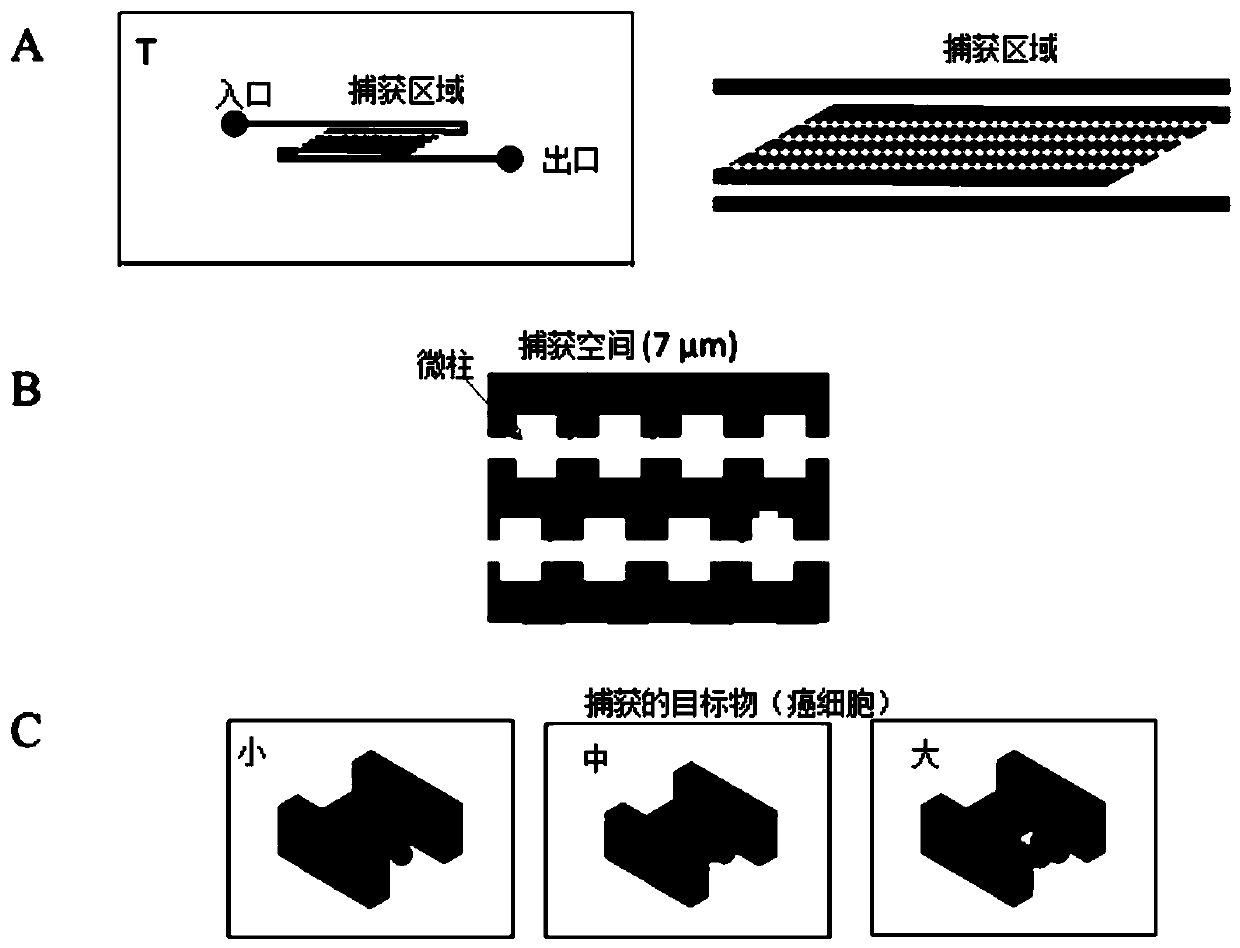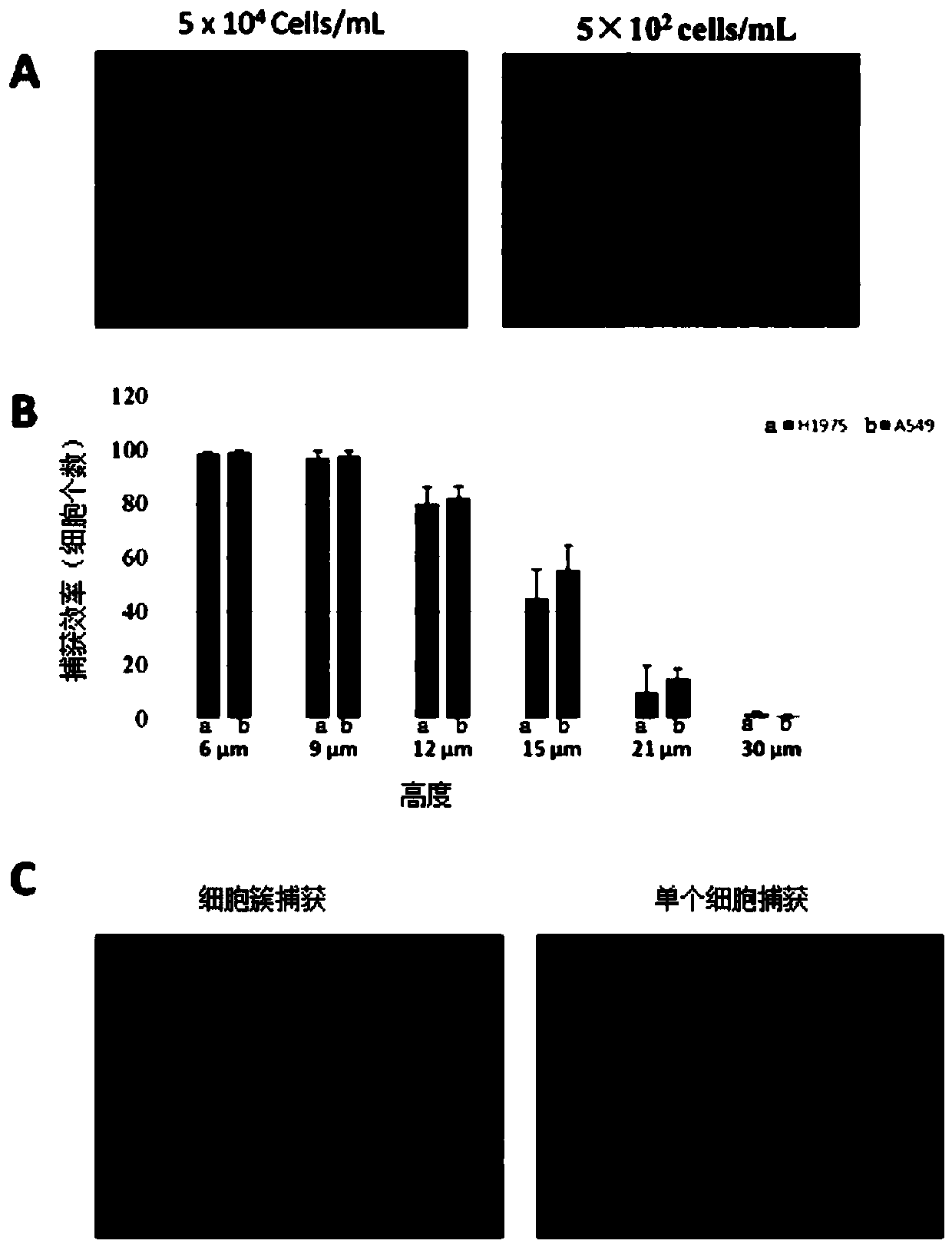Microfluidic chips and cell screening methods
A microfluidic chip and target cell technology, applied in chemical instruments and methods, biochemical equipment and methods, animal cells, etc., can solve the problems of low cell efficiency, poor activity, poor sensitivity, etc., and achieve high enrichment efficiency Effect
- Summary
- Abstract
- Description
- Claims
- Application Information
AI Technical Summary
Problems solved by technology
Method used
Image
Examples
Embodiment 1
[0042] Fabrication of microfluidic chips:
[0043] The microfluidic of this example is fabricated according to soft etching technique, which is formed of polydimethylsiloxane (PDMS) (10:1 silicone rubber and curing agent, Sylgard 184, Dow Midland, MI) combined with printed circuit board (PCB, 75×125×1.6mm, Pty.Ltd.). The microfluidic chip consists of a two-layer structure. The first layer of PDMS is etched on the PCB main board by ferric chloride solution (1.56×10-3mol / ml) at different times. The inlet and outlet of the second layer of PDMS are The holes are drilled by a circular hole punch with a diameter of 1.22 mm. The two PDMS layers were treated with air plasma for 2min (plasma cleaner / sterilizer, PPC-3XG, NY,US), and bonded the two PDMS layers together under a microscope.
[0044] Our goal is to capture cancer cells through the difference in physical properties between cancer cells and non-cancer cells. Based on the above preparation method, a PDMS microfluidic ch...
Embodiment 2
[0048] Non-small cell lung cancer (A549 cells and H1975 cells) are often used to test the feasibility of CTC capture chips. Cancer cells were cultured and suspended using DMEM medium. 1 ml of cell suspensions of different densities were injected from the inlet of the microfluidic chip in Example 1 at a flow rate of 12.5 μL / min through a digital syringe pump. The result is as image 3 as shown, image 3 From the results in A, we can see that almost all single CTC cells can be captured using a chip with a microcolumn height of 7 μm, regardless of the cell density as high as 5×10 4 cells / mL is still as low as 5×10 2 cells / mL. At high cell densities, cancer cells immunostained with red fluorescence were found in all spatially physically captured cells in the chip. Due to the high elasticity of cancer cells, all spatial physical trapping units can find cancer cells at high cell densities. The first row of spatial physical capture cells often has more cells captured because it i...
PUM
| Property | Measurement | Unit |
|---|---|---|
| height | aaaaa | aaaaa |
Abstract
Description
Claims
Application Information
 Login to View More
Login to View More - R&D
- Intellectual Property
- Life Sciences
- Materials
- Tech Scout
- Unparalleled Data Quality
- Higher Quality Content
- 60% Fewer Hallucinations
Browse by: Latest US Patents, China's latest patents, Technical Efficacy Thesaurus, Application Domain, Technology Topic, Popular Technical Reports.
© 2025 PatSnap. All rights reserved.Legal|Privacy policy|Modern Slavery Act Transparency Statement|Sitemap|About US| Contact US: help@patsnap.com



